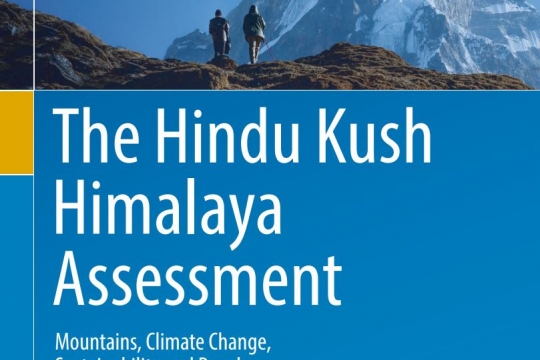The Hindu Kush Himalaya Assessment report launched on February 4th, 2019, finds that at least a third of the huge ice fields in Asia’s towering mountain chain are doomed to melt due to climate change, with serious consequences for almost 2 billion people.
Prof. E. Somanathan, Director of Indian EfD center CECFEE is the one of the lead authors of the chapter titled Air Pollution in the Hindu Kush Himalaya. We got the chance to ask him about his involvement in the report.
Why is the Hindu Kush Himalaya report important?
‘It assesses the scientific literature on the changes occuring in the HKH region. Two billion people depend on the rivers that originate here, and they are under threat due to melting glaciers and snowpacks.’
What do you think is the most important finding in the Air Pollution in the Hindu Kush Himalaya chapter?
‘Air pollution is increasing in the region and in the Gangetic plains to the south. Smoke particles deposited in the snow and ice are accelerating the melt and threatening the water supply on which so many lives depend.
What effects do you think findings from this report will have on climate negotiations at the global level?
‘I hope they will galvanise the countries in the region to take action on climate change, pollution, and environmental protection. The report shows very clearly that the economies of the HKH countries, including China and India are heavily dependent on protecting the ice and snow, and that this means that climate change and air pollution must be halted as soon as possible.
What effects to you think findings from the report will have on policy making in the HKH region?
‘I hope it will help policy-makers realize that protecting the environment is not sacrificing economic development, rather economic development will not take place without environmental protection.’
How did you get involved in writing this report?
‘I was invited by one of the editors, atmospheric scientist Arnico Panday of ICIMOD.’
Does any other of CECFEE’s EfD funded research relate to this report. If so, how?
‘A lot of CECFEE's research is on air pollution and how to mitigate it, so it relates very well.’
About the Hindu Kush Himalaya Assessment report: The report was developed over 5 years and includes contributions from 350 + researches and policy experts from 22 countries and 185 organizations. It was launched on February 4th, 2019, by International Center for Integrated Mountain Development (ICIMOD)
By: Karin Jonson

